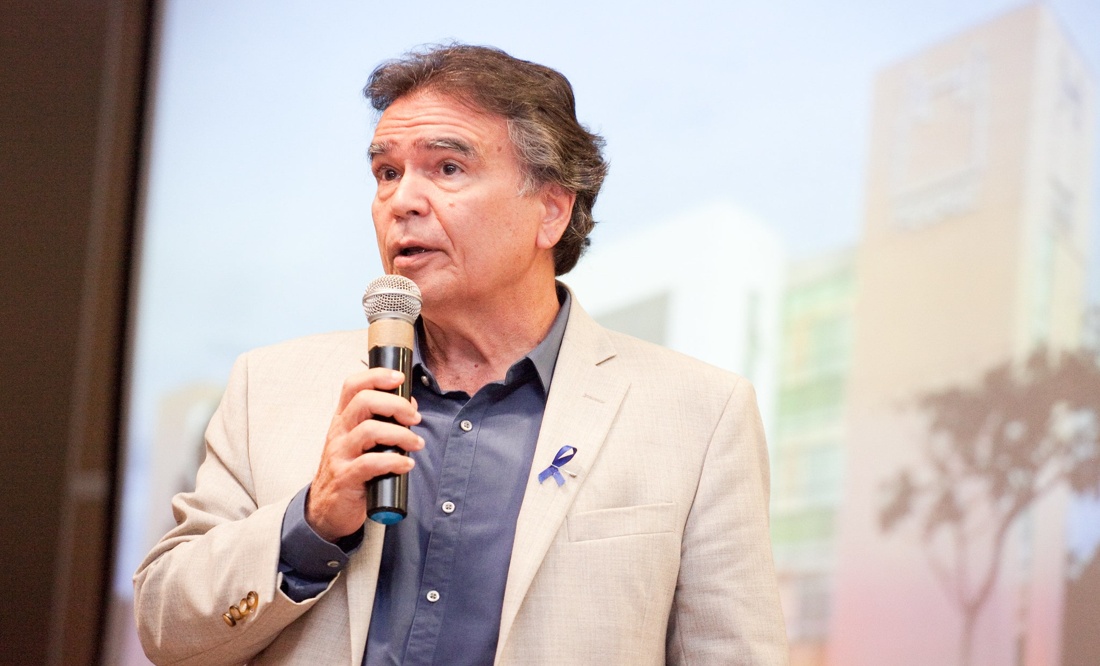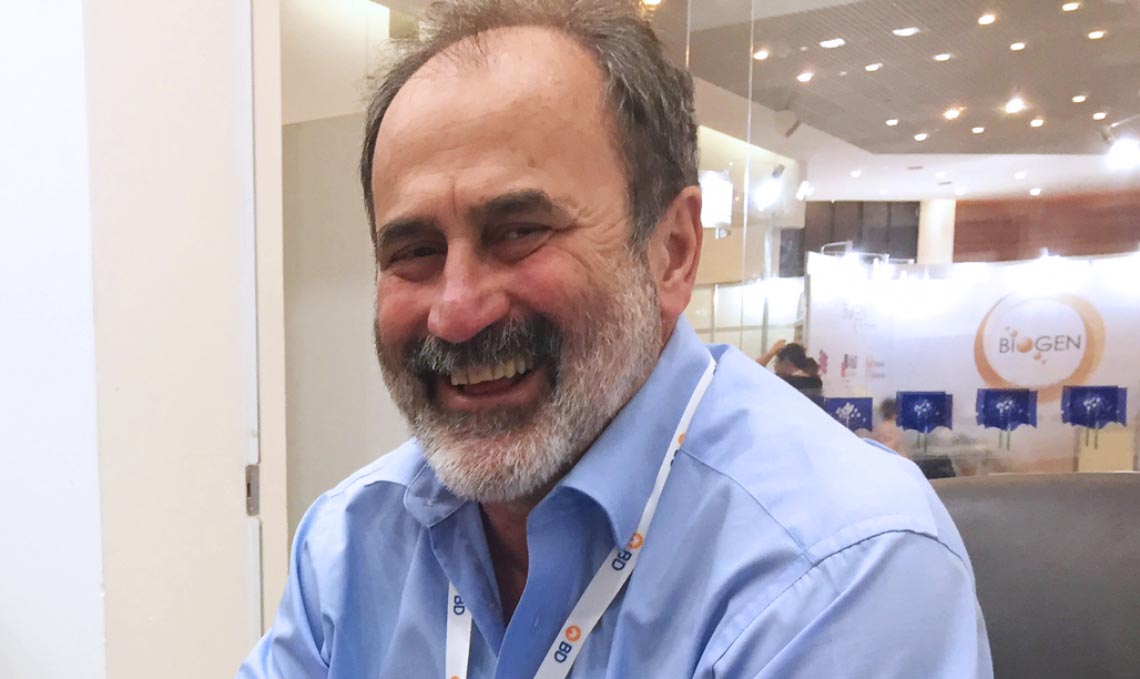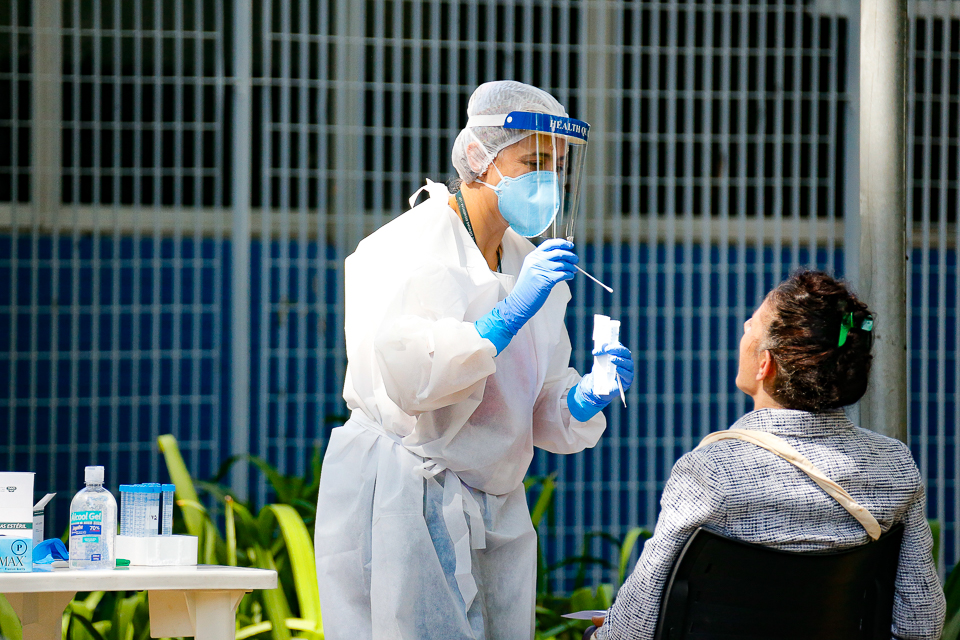 #Interviews
#Interviews
Traps in the immune system
Fernando de Queiroz Cunha from USP studies the role of neutrophil extracellular traps in sepsis, arboviruses, and COVID-19
 Fernando de Queiroz Cunha of USP in Ribeirão Preto: study of sepsis helped provide an understanding of more serious forms of COVID-19 | Image: Personal Archive
Fernando de Queiroz Cunha of USP in Ribeirão Preto: study of sepsis helped provide an understanding of more serious forms of COVID-19 | Image: Personal Archive
The Center for Research in Inflammatory Diseases (CRID), headed by Fernando de Queiroz Cunha, professor of pharmacology at the Ribeirão Preto School of Medicine at the University of São Paulo (USP), carries out integrative and translational research to identify and validate new biological pathways involved in the induction and resolution of inflammation. The CRID is one of the Research, Innovation, and Dissemination Centers (RIDCs) funded by the São Paulo State Research Foundation (FAPESP).
In his scientific work, Cunha has collated research on sepsis, which during the pandemic proved important to understanding inflammatory processes in severe forms of COVID-19.
In an interview with Science Arena, the researcher, who is globally renowned in the field of immunometabolism, addressed topics ranging from arboviruses to cancer, in the context of his discoveries related to neutrophil extracellular traps (NETs), which can harm but also protect the immune system.
Science Arena – What are the most prevalent inflammatory diseases among Brazilians today?
Fernando de Queiroz Cunha – Before the knowledge we have today, inflammatory diseases were characterized by the clear presence of the five cardinal signs, which are swelling, heat, redness, pain, and loss of function. The most prevalent was rheumatoid arthritis. As research has evolved, we are seeing that almost all diseases have an inflammatory component, albeit with different origins.
Inflammation can be caused by infections, and the biggest concern in that regard is sepsis, which is systemic. There is also leishmaniasis, which is a disease caused by a local infection but which has an intense inflammatory response. There are also diseases whose origin is the autoimmune system. And we can list others, such as multiple sclerosis, and intestinal diseases such as colitis and Chron’s Disease.
We now include metabolic diseases as inflammatory too, as well as cardiovascular diseases. Another example is cancer. We now know about the tumor microenvironment and its inflammatory nature, which has resulted in the development of new drugs that aim to reestablish the mechanisms that enable the body to fight cancer cells, as we do with immunotherapy.
What are the main advances your group has made at the Center for Research on Inflammatory Diseases (CRID)?
When we started, we had a great understanding of the mechanism of pain, and we were the first to demonstrate how the conversation took place between the agent causing the inflammation and the sensitization of sensory neurons, adding the word cytokine to this discourse.
It was already known, but we proved that the link between inflammatory stimulus and sensitization of neurons occurred due to the presence of cytokines.
We have specialists in inflammatory and neuropathic pain, and sometimes these pains have similar mechanisms. We are studying these mechanisms, trying to understand how sensitization of these neurons occurs.
As a result, we are one of the best prepared groups to discuss and develop new drugs. In recent years, we have evolved from migration mechanisms to understanding which are injury mechanisms, and we are now focusing our studies on the role of NETs (neutrophil extracellular traps).
What are NETs and what do your group’s studies, including the review published in Trends in Pharmacological Sciences, have to say about their role in causing damage to the immune system?
The idea came from leukocytes, specifically neutrophils, which are the main cause of damage in the acute phase of inflammation. They are the first line of recognition and defense against infectious agents, such as bacteria, and are effective at pro-inflammatory immune responses. The neutrophil unwinds, decondenses, and binds a number of cytotoxic enzymes from its cytoplasm to the DNA of the invader.
It’s a bit like throwing a net, like a fisherman catching fish. In practice, neutrophils release these nets into the extra-inflammatory space, trap the bacteria—because it is a net of DNA strands—and then, when the microorganisms come into contact with the cytokines, they die.
The big challenge is that the same mediators that play such an important protective role, such as free radicals or NETs, also cause injuries.
And so we end up in a Sophie’s Choice situation. If you inhibit these mediators, you can prevent injury from an inflammatory disease, but it can make the body more sensitive or susceptible to infections, because you have reduced the defense mechanisms.
We are now working on precisely understanding the mechanisms by which NETs fight microorganisms and the mechanisms by which they damage tissues. The objective is to find ways to better modulate the cell’s metabolism and consequently change its profile from harmful to protective.

Has the new knowledge about sepsis contributed in any way to our understanding of the inflammatory processes of COVID-19?
When the [COVID-19] pandemic began, we pooled our knowledge about the role of NETs in rheumatoid arthritis and formed a group to study the association with the disease. At the CRID, we have published more than 100 articles, many in high-impact journals, such as a paper in The Journal of Experimental Medicine that was the most read article in the journal for two years.
In “SARS-CoV-2–triggered neutrophil extracellular traps mediate COVID-19 pathology,” we showed that the NET mechanism is involved in the extreme inflammatory response that affects patients with the severe form of COVID-19.
We thus opened the door for new therapeutic approaches, including the repurposing of a drug currently used to treat cystic fibrosis. We are also now working on a treatment that inhibits the PAD-4 enzyme, which blocks the production of NETs.
How is Brazil positioned in the global landscape of immunometabolism research?
We have serious bottlenecks. To develop a new medicine, for example, what do you need? First, you need scientists to find potential targets. We have people with the training, especially in vaccines. There are scientists in Brazil studying how parasites, bacteria, fungi, and viruses interact with the organism.
To create a drug, first you need a molecule. It’s like assembling a Lego model—you need several chemical intermediates. Then you have to react one molecule with another, until you create the molecule needed to block a particular target. A receptor, for example.
When you find the molecule that reacts well, you synthesize it. Next comes animal testing. If that works, you start to feel a little more hopeful. Then you test whether it’s toxic or not on mice or other species.
After going through all these steps, it can finally be tested on humans.
In this entire process, the biggest bottleneck in Brazil is who produces these molecules in large quantities to be tested.
What are the main similarities and differences between the inflammatory processes of the most common arboviruses: dengue, Zika, and Chikungunya?
Although they are all arboviruses, the lesions and symptoms of each are different, as is the intensity of the inflammation. In the case of dengue, we were unable to show that the virus stimulates the production of NETs in the neutrophils, but when we tested the blood and plasma of infected mice, there was an increase, suggesting there may be an indirect release mechanism.
If you look at the three diseases, you see that they also differ in their preferences. Zika has a predilection for the central nervous system. Chikungunya causes much more damage to joints, which is closer to what you see in rheumatoid arthritis, for example. People with Zika don’t have so much joint pain. Dengue, meanwhile, causes a more systemic response.
Have there been any advances in the treatment of arboviruses?
Great advances are being made in vaccines, although a significant group of patients do not respond to them due to other infections or genetic alterations.
For any disease, we must have vaccines and a therapeutic arsenal whenever possible. We also need to pay attention to epidemiology, which includes vector control. Unfortunately, there is still no specific treatment for arboviruses, but we have vaccines being tested against dengue, for example.
What are the next steps for the CRID?
It will soon be 11 years since the center opened, and we hope to apply for new calls for research proposals from FAPESP. We want to keep this center running, because it’s so important for us to continue our contributions. In one decade, we published more than a thousand articles, more than 30% of which were in high-impact journals.
We have trained more than 500 graduate students, including master’s, PhDs, and postdocs. These graduates now live and work all over the world, and our research center is internationally recognized. We want to strengthen the production line for new drugs, as well as collaborate with other research groups on targets discovered here through our experimental models.
*
This article may be republished online under the CC-BY-NC-ND Creative Commons license.
The text must not be edited and the author(s) and source (Science Arena) must be credited.


